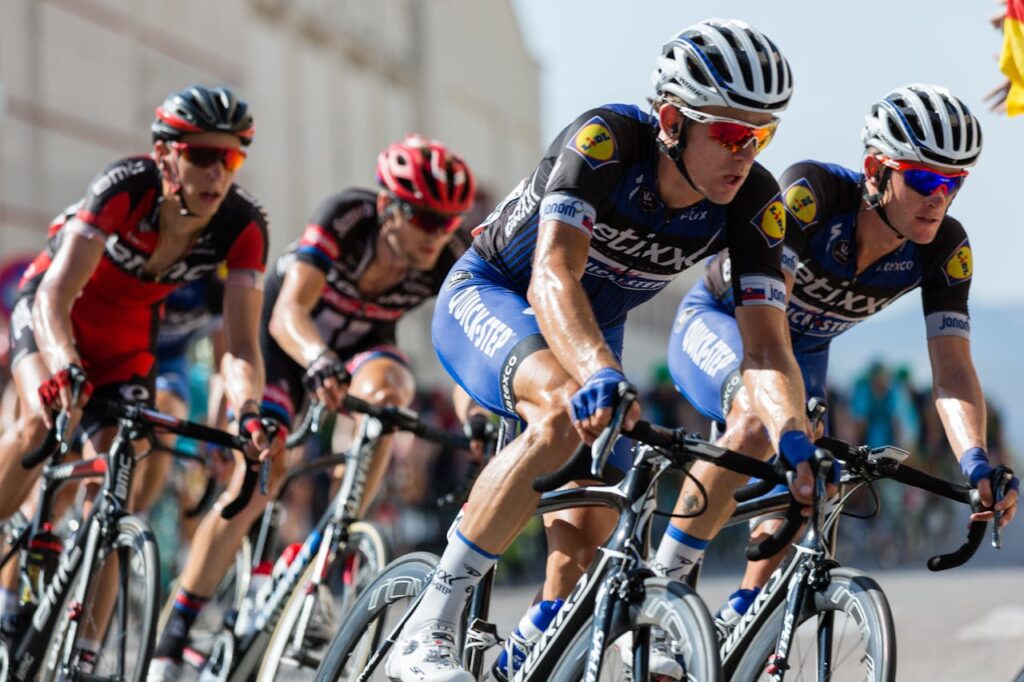
Explore & Play
Discover interesting topics and solve the accompanying crossword puzzle.
Sport Crossword | History and Impact of Team Sports
Table of Contents
Welcome to our exploration of team sports! We invite you to start by engaging with the Sport crossword, which will challenge your knowledge and pique your interest. If you’re not yet familiar with the topic, feel free to read through the article first for a deeper understanding, then return to enjoy the crossword for a fun way to reinforce what you’ve learned. Enjoy!
Sport Crossword
You can either fill in the crossword puzzle directly on this page or click the button in the bottom right corner to print it for free.

The Evolution of Team Sports: From Ancient Times to Today
Team sports have shaped cultures and communities throughout history, bringing people together in the spirit of competition and camaraderie. From ancient rituals to modern leagues, the evolution of these sports reflects changing societal values and technological advancements. This article explores the rich history of team sports, highlights various sports from different regions, and connects them to a unique crossword puzzle featuring prominent sports terms.
I. The Origins of Team Sports
The roots of team sports can be traced back to ancient civilizations, where games were not only a form of entertainment but also a means of community bonding.
A. Ancient Civilizations and Their Games
In ancient Mesoamerica, the Ulama, a ball game played with a rubber ball, showcased athleticism and strategy. Similarly, ancient Greece celebrated athletic prowess with events like the Olympic Games, where early forms of soccer and wrestling were prominent. In these cultures, sports served as both entertainment and a way to honor the gods.
B. The Role of Team Sports in Society
Team sports created a sense of identity and belonging, allowing communities to come together to support their local teams. This bonding experience laid the groundwork for the organized sports we know today, fostering social connections that transcend generations.
II. The Development of Modern Team Sports
As societies evolved, so did the structure and organization of team sports, leading to the formation of leagues and competitions.
A. The Emergence of Organized Sports
The late 19th century marked a significant shift in how sports were perceived. With the establishment of cricket clubs in England and the formation of the National League in baseball, organized competitions gained popularity. Sports like cricket and baseball transformed from informal games into structured leagues, complete with rules and regulations, paving the way for professional athletics.
B. Globalization and the Spread of Sports
In the 20th century, sports like basketball and volleyball exploded in popularity, largely due to globalization. The creation of international competitions, such as the Olympics, helped spread these sports worldwide, making them household names in various countries. As athletes crossed borders, they brought diverse styles and techniques, enriching the global sports culture.
III. Key Team Sports and Their Unique Features
Each team sport has its own set of rules, styles, and cultural significance, reflecting the values of the communities that play them.
A. Soccer (Football)
Widely regarded as the world’s most popular sport, soccer boasts a rich history and a passionate fanbase. Originating in England, it has grown into a global phenomenon, with leagues and tournaments that capture the hearts of millions. Its simplicity—two teams, a ball, and a goal—combined with its fast-paced action, makes it universally appealing.
B. Rugby
Emerging from English schools in the 19th century, rugby is known for its physicality and camaraderie. With formats like Rugby Union and Rugby League, it has adapted to various playing styles. Countries such as New Zealand and South Africa take immense pride in their rugby heritage, often viewing it as a symbol of national identity.
C. Basketball
Invented in 1891, basketball quickly gained traction as a fast-paced indoor sport. Its global reach has been amplified by the NBA, which showcases incredible talent and athleticism. Women’s basketball is also rising in prominence, with leagues around the world gaining popularity and recognition.
D. Volleyball
Volleyball has evolved from a recreational activity to a competitive sport enjoyed globally. With indoor and beach variations, it appeals to different audiences. International competitions and professional leagues have established it as a staple in the sports world.
E. Ice Hockey
Primarily played in cold-weather regions, ice hockey combines speed and skill on an ice rink. Known for its passionate fanbase, particularly in Canada and the U.S., it offers a unique blend of teamwork and individual prowess. The NHL has further popularized the sport, showcasing high-stakes competition and thrilling gameplay.
IV. The Role of Individual Sports in Team Environments
While team sports dominate the landscape, individual sports have also found ways to incorporate team elements, creating unique competitive formats.
A. Athletics (Track and Field)
Athletics, particularly track and field, often includes team events like relays. These races require both individual talent and collective effort, showcasing the importance of teamwork in what is typically an individual sport. The thrill of a relay race, where each runner passes the baton, exemplifies the synergy of teamwork.
B. Martial Arts and Team Competitions
While primarily individual, martial arts have developed team competitions that emphasize discipline and strategy. Events in Judo and Taekwondo now feature team formats, highlighting how these traditionally individual sports can foster teamwork and collaboration.
C. The Rise of CrossFit and Team Challenges
CrossFit has revolutionized the fitness landscape by promoting team challenges alongside individual workouts. Competitions often require groups to work together to achieve common goals, blending strength, strategy, and unity.
V. The Influence of Technology on Team Sports
In the modern era, technology has dramatically altered how team sports are played, viewed, and analyzed.
A. Broadcasting and Global Reach
The advent of television and streaming platforms has allowed sports to reach global audiences. Fans can now watch American football games from anywhere in the world, enhancing the sport’s popularity and creating dedicated fanbases across borders. The accessibility of live sports has transformed the way people engage with their favorite teams.
B. Performance Analysis and Training
Data analytics has become integral to team strategy and player performance. Coaches use technology to analyze games, helping teams like cycling and rowing refine their tactics. Athletes can now receive immediate feedback on their performance, enabling continuous improvement and enhanced competition.
VI. The Cultural Impact of Team Sports
Team sports have transcended mere games, influencing culture, politics, and social change around the globe.
A. Sports as a Catalyst for Social Change
Throughout history, sports figures have taken stands on important social issues. Athletes like Muhammad Ali and Colin Kaepernick have used their platforms to advocate for justice, demonstrating the power of sports to inspire change. This legacy continues, as many teams and players engage in activism today.
B. The Role of Team Sports in National Identity
During events like the World Cup, team sports unite nations, fostering a sense of pride and belonging. For example, rugby matches can evoke national sentiments, bringing together fans to celebrate their heritage and community.
VII. The Future of Team Sports
As we look to the future, team sports will continue to evolve, facing new challenges and opportunities in an increasingly connected world.
A. Emerging Sports and Trends
New team sports like padel and esports are gaining traction, reflecting changing interests and demographics. These sports offer fresh opportunities for engagement and competition, appealing to younger audiences.
B. Sustainability and Inclusivity in Sports
The future of sports also hinges on efforts to promote sustainability and inclusivity. Initiatives aimed at making sports accessible to all, regardless of ability or background, are crucial for ensuring the continued growth of team sports in society.
A New Chapter for Team Sports
The journey of team sports from ancient rituals to modern-day competitions illustrates the profound impact sports have on society and culture. As they evolve, these sports will continue to unite communities and inspire future generations.
To celebrate the diversity of team sports discussed in this article, we invite you to engage with the accompanying crossword puzzle featuring the sports mentioned. Challenge yourself and test your knowledge while enjoying the world of sports!
Share to...
I hope you enjoy the content.
Want to receive our daily crossword puzzle or article? Subscribe!
You may also be interested in
Share to…
Want to receive our daily crossword puzzle?
-
Jigsaw Puzzles
Chinese Dragon Jigsaw Puzzle – Zodiac Series Art 250 | 300 | 500 Pieces
kr 348,00 – kr 439,00Price range: kr 348,00 through kr 439,00 Select options This product has multiple variants. The options may be chosen on the product page -
Jigsaw Puzzles
Fish Market in Norway Jigsaw Puzzle 250 | 300 | 500 Pieces
kr 348,00 – kr 439,00Price range: kr 348,00 through kr 439,00 Select options This product has multiple variants. The options may be chosen on the product page -
Jigsaw Puzzles
Majestic Unicorn Watercolor Puzzle 250 | 300 | 500 Brikker
kr 348,00 – kr 439,00Price range: kr 348,00 through kr 439,00 Select options This product has multiple variants. The options may be chosen on the product page

















